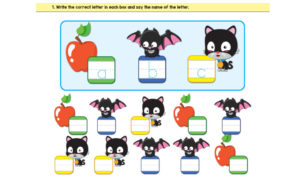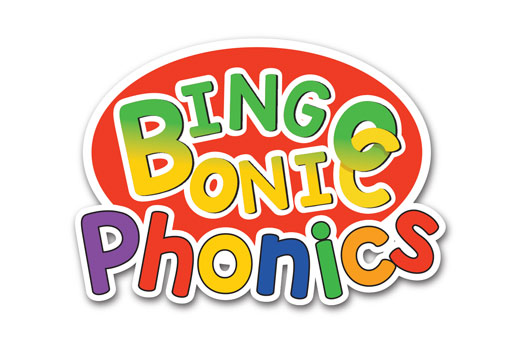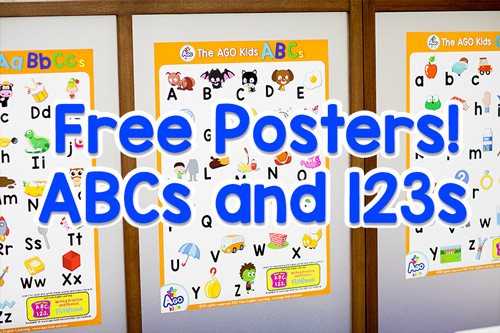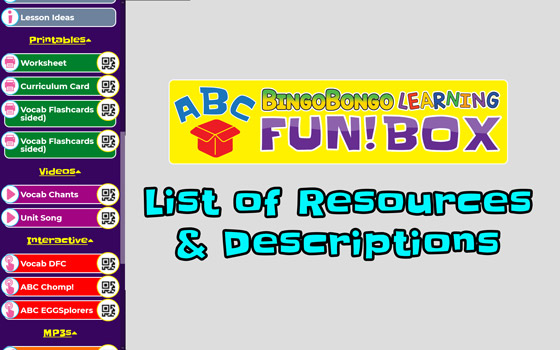Here are the top 4 reasons students aren’t doing their English homework from your ESL/EFL lessons and ways to get them motivated!
If you’ve ever seen or taught an English lesson in Japan at an English conversation school (eikaiwa), then you probably know how common workbooks and textbooks are in lessons. Assigning homework is an important part of an English curriculum because the students can review vocabulary and topics from previous lessons at home. This way they will be prepared to learn new material in new lessons. If teachers have to spend time reviewing old lessons, however, the curriculum will be less effective in the long run.
Unfortunately, one thing I often hear teachers say is that their students don’t always do their homework. Sometimes students forget to do it, they lose their books, or simply aren’t motivated. This can be frustrating since a lot of time and planning goes into preparing an effective English curriculum. So today, let’s look at the top 4 reasons students don’t do their English homework in ESL/EFL lessons. While we’re at it, let’s also discuss some solutions to these problems to get students back on track to becoming confident English speakers.
Top 4 Problems That Kill Motivation to do Homework
To tell you the truth, we also experienced this frustrating problem at our English conversation school, Step by Step Eikaiwa, when we first started out. We used a variety of popular textbook series and teaching methods, but never found the results satisfying. Because of that, we decided to create our own original English curriculum, specifically for our own ESL/EFL students in Japan. So far, we’ve created over 800 worksheets, 800 flashcards, and a homework system that has solved most of our problems. Now our students do their homework 99% of the time, even when we assign up to eight pages per lesson!
When your students beg you to give them their homework every lesson, you know you can count on your curriculum.
Problem 1: The homework is too easy or too difficult
This might seem obvious, but we’ve seen so many workbooks and worksheets that don’t match the ability of our students. If the English homework is too easy, then students will quickly lose interest, not learning anything. If it’s too difficult, then they will feel frustrated or overwhelmed, possibly developing a negative attitude toward learning English.

Andy just turned 4 years old. His writing skills improve every lesson.
The Solution:
Make sure that students have assignments which have a challenging component, yet can be done without causing frustration. Our Code Time worksheets, for example, have a fun puzzle that kids can solve to develop problem-solving and critical-thinking skills. Even if they can’t read the decoded messages, they still feel a sense of accomplishment after they complete the worksheets.
Problem 2. The homework is often boring, black and white, and feels like a test/quiz
It’s easy to understand why teachers prefer black and white worksheets: they’re convenient and easy to photocopy. From the students perspective, however, every aspect of daily life is in color, from TV to YouTube to video games. It’s only natural that black and white worksheets based on line art from the 1970’s is going to feel like a form of punishment for young ESL/EFL learners.

Once students can easily do a certain worksheet type, add a new challenge such as writing in lowercase or saying a sentence using the new words.
The Solution:Color worksheets all the way, every day!
Color worksheets hold children’s attention better, plus they can challenge students to think in ways that black and white worksheets can’t. Take a look at our incredibly effective BINGOBONIC Phonics worksheets for example. The phonics practice is based on familiar vocabulary, but changes to a color-coded system, allowing students to think and solve problems in a variety of ways.
- Simple words and picto-puzzles
- Color-puzzles and speaking challenge
Finally, if you think black and white is better because it’s more cost effective, think again. Teachers and educators can get up to 50% off the retail price for FUN!books. At 50% off, the price is cheaper for the FUN!books than for black and white prints or photocopies page-per-page. Don’t forget about the time you’ll save never making or searching for worksheets to use in your lessons again.
Problem 3. Inconsistency in amount of homework and how often it’s assigned
If there’s one thing that children love, it’s doing something fun again and again. And for children to learn and grow, they need lots of repetition and a good routine. If the amount of homework regularly changes, or it’s only given sometimes, then it becomes difficult for students to get into a routine and do homework out of habit.

Students bring their school bags every lesson with a folder for new homework and a folder for completed homework. Nothing else.
The Solution: Assign the same amount of homework, and assign it every lesson
Our BINGOBONGO Curriculum Cards make assigning homework super easy. In fact, the entire homework list for the year is decided before we have our first lesson. Since all the teachers, parents, and students have a copy of the Curriculum Cards, it’s easy for everyone to get into the homework routine.
Problem 4: Homework assignments have too many books, workbooks, things to do, or are unnecessarily complicated
We’ve heard of students carrying a textbook, a workbook, a phonics book, a journal notebook, and more. If a student has multiple workbooks, textbooks, or other materials required to do homework assignments, chances are it’s going to confuse students and parents, leading to unfinished homework.

Simply the homework process with a folder for new homework. Students can keep their completed homework assignments in a different folder.
The Solution:Keep it superbly simple!
The easier the homework is to understand, the less confusion there will be for teachers, students, and parents. At Step by Step Eikaiwa, for example, every student has a blue folder just for new homework and the current Curriculum Card. Everything else gets stored in a different folder for completed homework.
Since BINGOBONGO FUN!books have convenient “tear-able” pages which allows individual pages to be removed, the teacher just has to prepare the homework packet for each student before class: it typically takes less than 5 minutes. The students then take their homework folders home where parents can see at a glance if the homework has been completed. In the next lesson, students take out their homework folders, the teacher signs the completed homework, and it gets filed in their storage folders. It’s as easy as 1-2-3!
Do any of these problems look familiar in your English lessons?

Simple is best when it comes to assigning homework.
If you’re having troubles motivating students to do their homework, you should check to see if your homework assignments or curriculum have any of the problems mentioned above. Since BINGOBONGO Learning’s worksheets, flashcards, Curriculum Cards, and student profile cards are 100% FREE to download and use, you can try incorporating them into your current curriculum and homework assignments without any disruption to your current curriculum plans. Who knows, you might even see a positive change in your students’ attitudes toward their English homework.
Another useful way we found to help motivate students was to spend 10 – 15 minutes of class time doing a part of their homework in class together. This is a great opportunity for teachers to check that students know how to do the homework and make sure they’re practicing speaking and reading out loud. Most of BINGOBONGO Learning’s worksheets are designed with a speaking component such as Verb Matching and Adjective Matching, which makes them ideal for using in class as well.
We also found that students love our worksheets so much, that we no longer play games in English classes. Instead, we now have fun doing worksheets together! Whatever style of lessons and homework you decide to use, however, it’s important to remember the following: as long as your students are staying motivated and doing all their homework, you’re on the right track to helping them get the most out of their English education.
There are plenty more articles for language school owners below!
Starting your own language school can be a rewarding career path, both financially and personally – so check out our other articles on this topic to find out everything you need to know about setting up and managing your own English language school (eikaiwa school in Japan)!
9 Online Teaching Tips (Must See 90-Minute Zoom Tutorial!)
This Zoom Presentation is packed with 9 Online Teaching Tips and MUCH MORE! Gain ...
10 Free Online Activities for teaching English
Check out these 10 Free Online Activities for teaching English to create impressive ESL/EFL ...
Free English Lesson Plans for Online Teaching (4 great tools!)
Free English Lesson Plans for Teaching EFL/ESL Online That Save You Time and Money ...
Standardized English Tests: Problems & Solutions for Language School Owners (in Japan)
Should I teach English lessons to improve test scores, speaking ability, or both? Today ...
Introducing No-App Online ESL/EFL Flashcards! (DILLS)
Our New Online Digital Flashcards Are the "Perfect Flashcards" You've Been Looking For! If ...
5 Ways to Save Time and Money in an EFL/ESL Classroom (Efficiency Tips!)
Here are 5 ways that you can save time and money in your English ...
Top 4 Reasons (With Solutions) Student Aren’t Doing ESL/EFL Homework
Here are the top 4 reasons students aren't doing their English homework from your ...
Problems with Games in ESL/EFL Classrooms (and Solutions)
If you observe any English lesson in an elementary school or English conversation school ...
The Stagger-Repeat Teaching Method – START Method for EFL/ESL English Education
An Approach to Teaching EFL with Mixed-Ability Students Using the Stagger-Repeat Teaching (START) Method ...
5 Effective Marketing Strategies for Language Schools (eikaiwa)
How can these 5 long-term, cost-effective marketing strategies for language schools (eikaiwa) benefit your ...
80 Free Phonics Worksheets Download
BINGOBONIC Phonics Has The Best Free Phonics Worksheets for ESL/EFL Kids! A new approach ...
BINGOBONGO English Curriculum: 400+ FUN ESL Lessons
The BINGOBONGO English Curriculum for Kids ESL/EFL How is this English curriculum different? After ...
Free English Curriculum for EFL Kids Lessons
A Guide for eikaiwa Schools in Japan to Building an Effective Free Kids English Curriculum ...
Free Halloween Flashcards, Worksheets, and Songs
Make your next class frightfully fun with our free Halloween flashcards, quiz and songs! ...
Easy Halloween Quiz for English classes
Put your kids to the test with this fun and easy Halloween quiz ...
The Four Rs of EFL/ESL Education | How to teach effective English lessons
Using the four Rs of EFL/ESL English education will help you teach more effectively.In this ...
Free ESL/EFL ABCs and 123s Alphabet Posters (Numbers, Phonics)
Make your English classroom a fun place for learning with these free ABCs and ...
ESL Lesson Plan Ideas for Speaking English 1: Taking Roll (be-verbs: to be, is, am, are)
Try this simple and effective activity to teach the be verb (is, am, are) ...
How to Win an English Speech Contest in Japan
Help your students win an English speech contest in Japan with this guide ...
Free Online ESL Halloween Quiz (10 Easy Questions)
Test your knowledge with this fun Online ESL Halloween Quiz! This ...





























